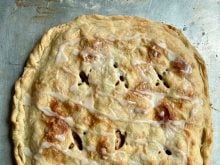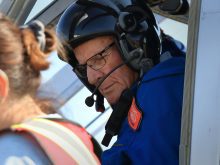Over the next two summers, railway crossing signs in Canada will become easier to spot.
Under a joint program of the federal transport department and the railways, a reflective material will be applied to the X-shaped railway crossing signs known as crossbucks. These signs are usually in rural areas at road and railway crossings with no bells, lights or gates.
The tape will be applied to the front and back of the vertical post and on the back of each sign, which will make the warning stand out at night.
Read Also

From farmer to award-winning distiller
Pivot Spirits showcases transition from farmer to distiller with provincial award-winning results in Alberta for Lars Hirch
“In addition, when trains are passing through a crossing at night, motorists will now see a strobe effect created from the opposite side of the crossing as the vehicle headlights reflect back in between the rail cars of the moving train,” said const. Kelly Brown of the Canadian National Railway police in Saskatoon.
The goal is to reduce the number of collisions and accidents involving motor vehicles and trains by 50 percent by 2006.
Canada had 248 collisions in 2003 with 26 deaths and 51 serious injuries. That is down from a decade ago when there were 379 collisions, 56 deaths and 80 serious injuries.
The reflective tape can only be installed during the summer so this year CN and Canadian Pacific Railway focused on Saskatchewan. Manitoba and Alberta will be next year.
In a News release
news, CN said it will put the tape on all of its 5,800 railway crossings in Canada that do not have automated warning devices. About 3,000 of those crossings are on the Prairies.
Brown said the tape will also be applied to the sides of new rail cars, but the old cars in CN’s fleet won’t be converted.
CPR spokesperson Ed Greenberg said his company is about halfway through taping its 4,400 prairie crossings. He said CPR’s new cars will have the tape and older ones will get it when they are brought in for maintenance.














